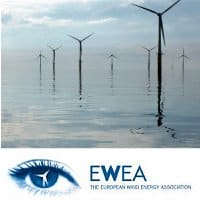Wind power could become the single largest source of electricity in Europe by 2030, according to a new report from the European Wind Energy Association (EWEA). However, governments must aim high and continue to take strong action on climate policy.
Wind energy currently provides over 10 percent – 128.8GW – of Europe’s power supply in a normal wind year, but this figure would rise to 28.2 percent – 392GW – by 2030 provided Europe continues to forge new technological and commercial paths in the global sector.
“Wind power can be the foundation of the European energy system within the next 15 years,” said Giles Dickson, Chief Executive Officer of the European Wind Energy Association.
The report, Aiming High – Wind Energy in 2030 (PDF), identifies key policy areas where EU governments can show how serious they are about increasing the share of wind in Europe’s energy mix at year’s climate talks in Paris.
The reforms include:
– Streamlining national permitting procedures across the EU to allow cheaper wind farm development both on and offshore;
– Establishing a post-2020 renewable energy action plan binding EU member states to long-term CO2 reduction targets and rewarding member states for meeting renewable goals;
– Completing structural reforms of the EU Emissions Trading System (ETS) with a high and stable carbon price which dis-incentivises the investment in carbon-intensive industries and inefficient fossil fuel-driven power plants
The 2030 scenario outlined in the report sees Europe’s energy supply dominated by renewable sources; with wind, hydro, solar and biomass forming 53 percent of the continent’s generation mix. Coal’s share falls from over 18 to 9.3 percent, while oil becomes obsolete, leading to a reduction in greenhouse gas emissions of 63.7 percent below 1990 levels.
While the ambitious goals may cost money in the short term, EWEA says Europe can be more efficient by decoupling fossil fuel consumption from GDP growth.
If adopted, the recommended measures would add €13 billion (AUD$19.44 billion) to the European economy – the equivalent of the EU’s funding for transport infrastructure over the next 5 years – and would result in an additional 366,000 direct and indirect jobs in the wind power sector.
“Wind power makes economic sense. But policymakers must demonstrate more determination than is on show today,” said Mr. Dickson. “Wind power can deliver economic growth in Europe by boosting investments, creating jobs and reducing electricity bills. A new market design, a reformed ETS and rigorous accountability on 2030 targets are essential if these goals are to be achieved.”













































